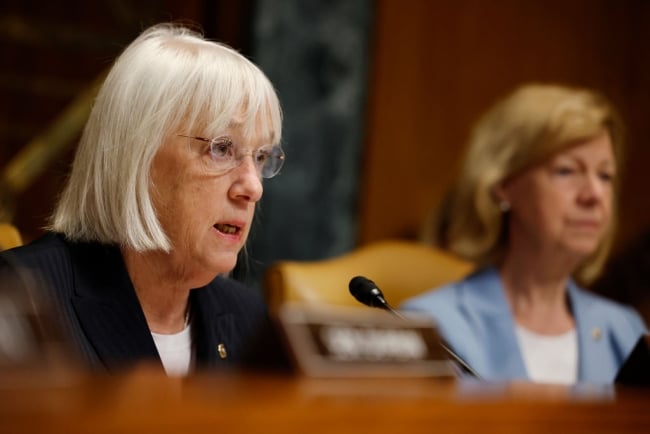You have /5 articles left.
Sign up for a free account or log in.

Senator Patty Murray, the Washington Democrat who chairs the Senate Appropriations Committee, said the Senate’s proposed budget for the Departments of Education, Labor and Health and Human Services “makes major new investments to help Americans in every part of the country.”
Chip Somodevilla/Getty Images
Senate appropriators on Thursday signed off on a bipartisan spending plan that would provide low-income students with more money for college and send $100 million more to the cash-strapped Office of Federal Student Aid.
The plan is a stark contrast to the sweeping cuts to the Education Department’s budget proposed by House Republicans earlier this summer. Their legislation would keep funding flat for the Pell Grant program while eliminating 17 other programs and cutting $529 million from Federal Student Aid’s budget. The House has yet to vote on that bill, which made it out of committee on a party-line vote.
Congress has until Sept. 30 to pass a budget for fiscal year 2025 in order to avert a government shutdown. Most analysts don’t expect to see a shutdown in an election year and say it’s more likely lawmakers will pass a short-term measure that would keep funding at current levels and give themselves more time to reach an agreement.
The budget is made up of 12 appropriations bills, though lawmakers can pass them as a package. So far, the House has approved six bills, while none have been considered on the Senate floor yet. But after Thursday, the Senate Appropriations Committee has favorably approved 11.
Sizable increases for higher ed programs were never in the cards. Lawmakers overseeing appropriations are technically bound by a deal reached in spring 2023 to avert a default on the federal government’s debt, which set spending levels for fiscal years 2024 and 2025. Under the deal, federal spending on nondefense programs can only increase by 1 percent. As in the previous fiscal year, House Republicans want deeper cuts, while senators have balked at the spending caps, seeking ways to boost funding for nondefense programs.
Senator Patty Murray, the Washington Democrat who chairs the appropriations committee, made the case for the Senate plan, arguing that that House was proposing “dangerous cuts.”
“We have once again produced strong, bipartisan bills that increase support for families, strengthen our national security, invest in our economy and competitiveness, and can actually be signed into law,” Murray said.
She said the Labor–Health and Human Services bill, which includes budgets for the Departments of Education, Labor and Health and Human Services, “makes major new investments to help Americans in every part of the country get a great education, make ends meet and get the support and services they need to stay healthy and thrive.”
Republicans on the Senate appropriations committee backed the bill, highlighting the various new investments in the plan that support bipartisan priorities.
The legislation would give the National Institutes of Health an additional $2 billion, which could mean more money for research at universities, and send nearly $1 billion more to the Education Department. The House plan would cut the department’s budget by $11 billion.
United for Medical Research, a coalition of research institutions and other patient and health advocates, said in a statement that the funding increase for NIH along with other recent investments in the agency continue to “give patients hope and would help maintain America’s global leadership in biomedical research.”
Under the Senate plan, the maximum Pell Grant award would increase from $7,395 to $7,495 and the federal college-prep program known as TRIO would get an additional $20 million. Meanwhile, the Postsecondary Student Success Grant Program and others would get $5 million more.
Senators said that the proposed additional funding for the Office of Federal Student Aid will help the agency roll out the Free Application for Federal Student Aid, which has been beset with challenges, and fix issues in student loan forgiveness programs. In fiscal year 2024, the agency received a little over $2 billion, a slight increase from the year before. The additional $100 million in this year’s budget falls short of President Biden’s request, which sought $625 million more for Federal Student Aid, but it’s more than the House plan.
“I’m disappointed that we weren’t able to do more,” said Senator Tammy Baldwin, the Wisconsin Democrat who chairs the Labor–Health and Human Services subcommittee. “This bill is very much a compromise that was developed in a fully bipartisan manner. The partisan approach in the House leads to constant threats of government shutdowns that do nothing but waste time and resources. This is a bill that can and should be passed by the Senate, passed by the House and signed by the president.”








